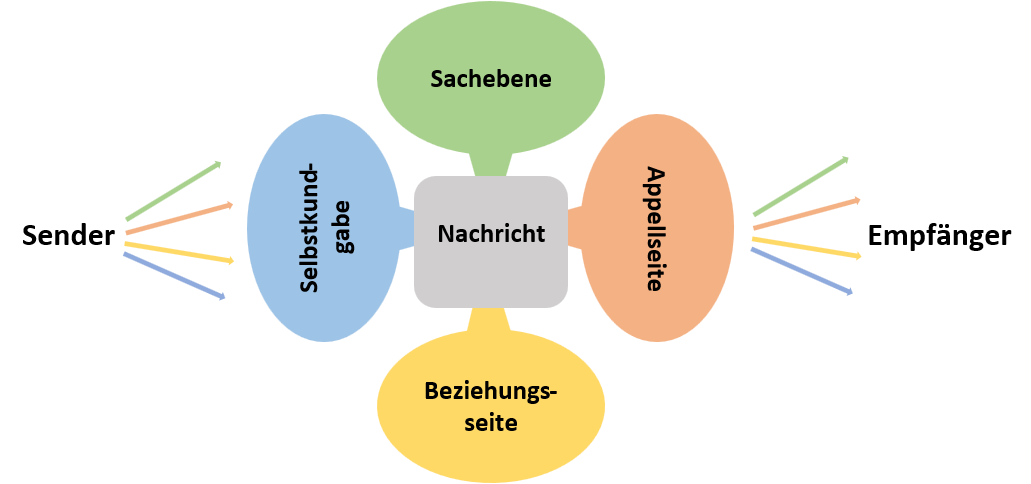Four Sides Of A Message
This model clearly describes why people so often communicate "past each other".

The 4 sides of a message model by Friedemann Schulz von Thun is an important part of communication psychology. It shows that humans can both send and receive on four different levels.
Communicating on just one level is next to impossible. In addition, each person tends to receive and send messages more frequently at certain levels depending on their human type, personality, experiences and values. The intonation also has a decisive influence on how messages are received by the recipient. This sometimes makes communication between people difficult and leads to misunderstandings.
The better you can assess someone, the easier it is to adapt your own communication to that of the other person. This leads to more harmony and understanding in communication.

Principles
Messages can be received at different levels. Different interpretations are usually possible at each level. This creates communication problems.
Example:
Sender: "Your hair is so curly today!"
What arrives at the recipent: "You don't look good (today).!"
These communication problems are clearly described on the basis of the following three guiding principles.
Said is not meant!
Heard is not yet understood!
Understood does not mean agree!
The Four Sides
The model is divided into the following 4 pages:
Factual Level
At the factual level, factual information, numbers, dates and facts are sent and received. If communication only took place at this level, communication would tend to be boring and monotonous.
The wife says to her husband, "There's a spider on the wall."
The man receives on the factual level: "There is a spider on the wall."
Appeal
At the appeal level, requests to act or refrain from action are sent or perceived.
The wife says to her husband, "There's a spider on the wall."
The man receives on the appeal level: "Look at the spider on the wall!"
Relationship Level
You and we messages are characteristic of the relationship level. The messages contain information about how the sender relates to the recipient (we) and what he thinks of him (you).
The wife says to her husband, "There's a spider on the wall."
The man receives on the relationship level: "You never notice anything like that!"
Self-Revelation
I-messages are characteristic for the level of self-revelation. The sender consciously or unconsciously reveals information about his self-image, his motives, values, emotions, etc.
The wife says to her husband, "There's a spider on the wall."
The man receives on the self-disclosure level: "I find this spider very fascinating"
But The Woman Meant Something Else....
The wife says to her husband, "There is a spider on the wall."
